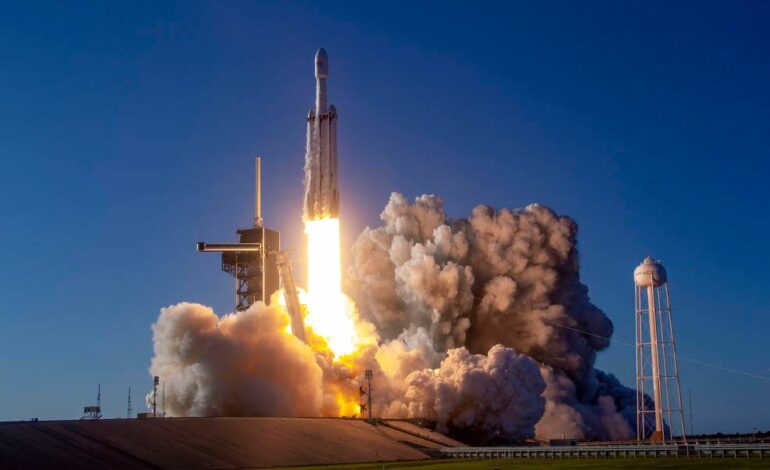
ISRO to launch communication satellite aboard Elon Musk’s SpaceX rocket
The Indian Space Research Organisation (ISRO) is all set to launch its communication satellite aboard the Elon Musk-owned SpaceX’s Falcon 9 rocket.
The 4700-kilogram GSAT-N2 satellite aims to provide data or internet services to remote areas.
It will also enable the availability of the internet in airplanes across the Indian region.
ISRO’s launch vehicle Mark-3 can put 4,000 kg into a geostationary transfer orbit, however, as GSAT-N2 weighs 4,700 kg, the space agency is using SpaceX’s launch vehicle. This marks ISRO’s first commercial launch using SpaceX.
GSAT-N2 (GSAT-20) is a Ka-band high-throughput communication satellite of NewSpace India Limited (NSIL), under the Department of Space and the commercial arm of ISRO.
The satellite features multiple spot beams and aims to support a large subscriber base with small user terminals.
According to ISRO: “GSAT-N2 has a mission life of 14 years… and is equipped with 32 user beams, comprising 8 narrow spot beams over the Northeast region and 24 wide spot beams over the rest of India. These 32 beams will be supported by hub stations located within mainland India. The Ka-Band HTS communication payload provides a throughput of approximately 48 Gbps”.
“This homegrown satellite when operational will fill that big hole of in-flight internet connectivity that exists over India on the world internet map,” said Dr. M Sankaran, Director of UR Rao Satellite Centre in Bengaluru.
“This is India’s highest throughput satellite and the only one operating exclusively in the much sought-after Ka-band,” says Dr. Sankaran.
Till now, whenever international flights enter Indian airspace, they have to switch off the internet as India does not allow this service.
But recently, India amended rules to permit in-flight internet access over India.
As per the new rules, Wi-Fi services can be provided inside aircraft at an altitude of over 3,000 meters. However, passengers would only be able to use these services when electronic devices are allowed for use on the aircraft.